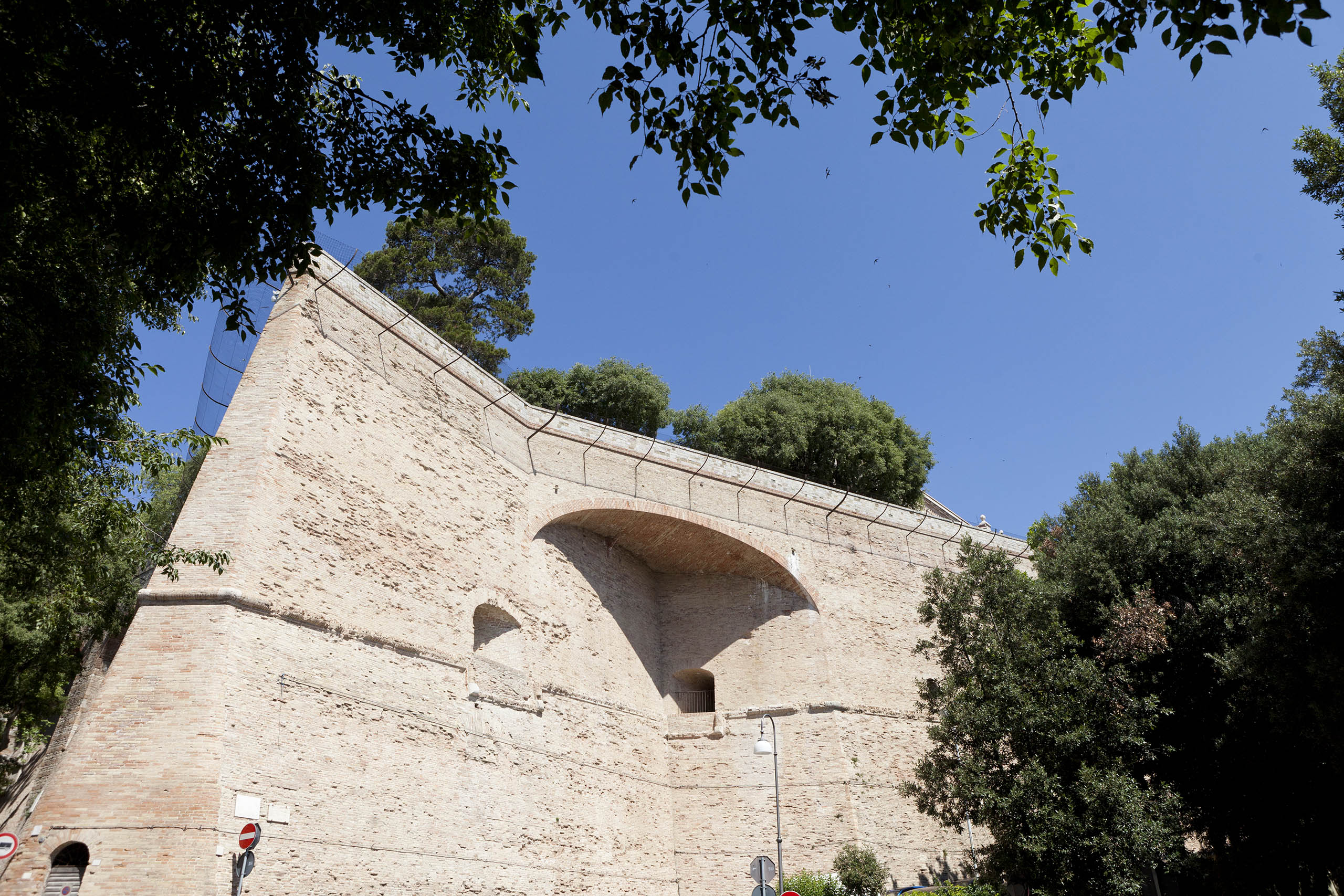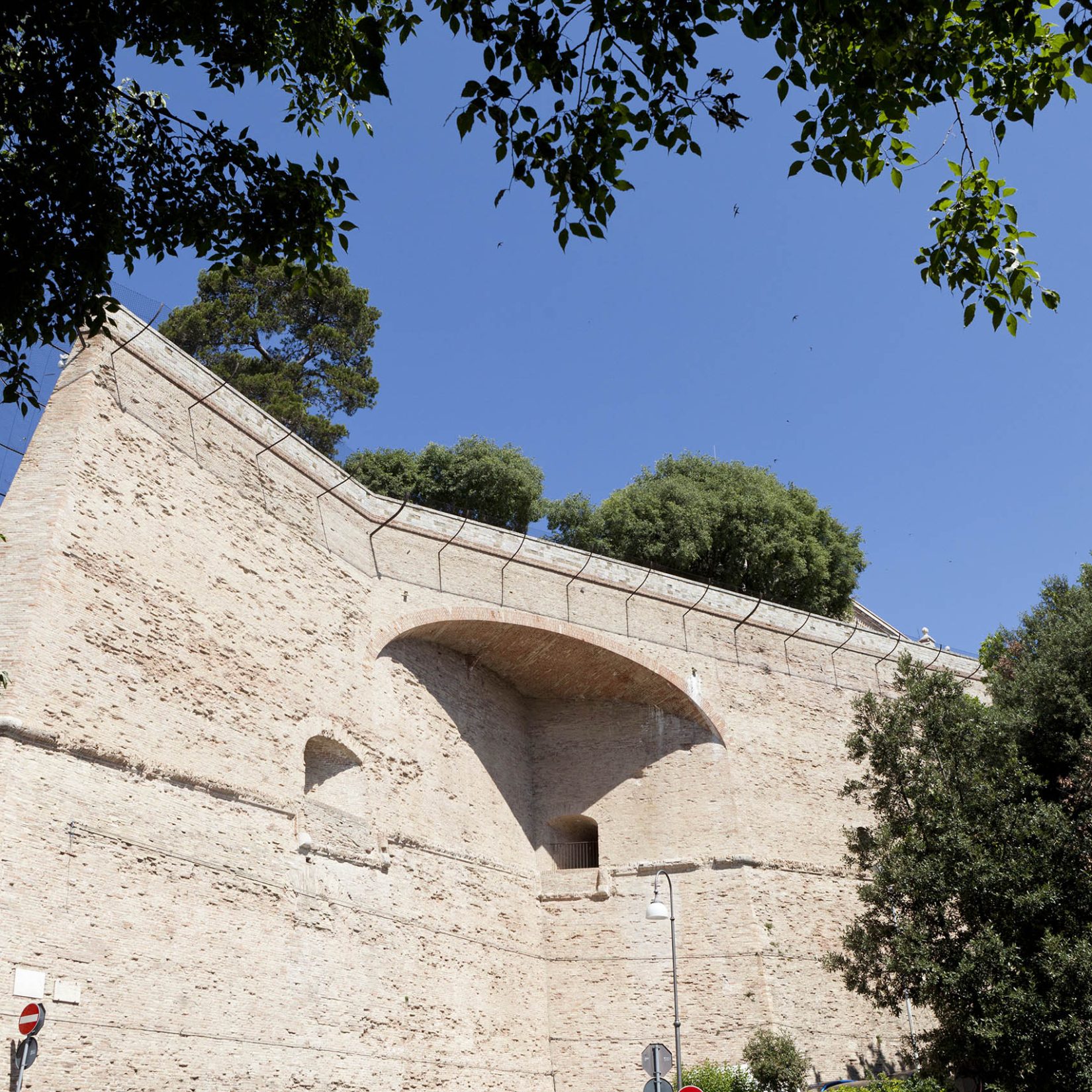
Rocca Paolina was designed by the famous military architect Antonio da Sangallo the Younger between 1540 and 1543 , following the will of Pope Paul III from whom it took its name. It stood as a real fortress and place of control, a symbol of the Pope’s rule over the city. As a matter of fact, after the Pope had quelled the rebellion known as “Guerra del Sale“(The War of the Salt), he destroyed one quarter of the city including the houses of the powerful Baglioni family. Moreover he demolished towers, streets, churches, convents and a part of the Santa Giuliana village, as well as many other medieval buildings.
Rocca Paolina consisted of a principal body and of an outpost, connected by a corridor. The first part was erected on the Landarone Hill, a strategic military point to rule the city center and to protect its most exposed part. The second part, was built in the plain and defined as “The Pincer”, served as garrison and was connected to the first part by three fortified walkways.
Hated by the people of Perugia, Rocca Paolina represented a true symbol of papal power which ruled the city for over three centuries, the fortress was partially demolished in 1848 and then partially rebuilt in 1860, at the behest of Pope Pius IX. Shortly after Perugia was annexed by the Kingdom of Italy, the fortress was completely razed to the ground by its citizens.
In fact, only the vaults of the fortress remained intact: the removal of its ruins and the restorations took place in the 1930s and ended in 1965, giving back the citizens of Perugia their “underground city”. Since 1983, the fortress has been crossed by the escalator which connects the bus station and the Etruscan acropolis.
Inside the walls of Rocca Paolina you admire the remains of the ancient “Giuoco del Pallone” (Play of Ball), sections of Etruscan walls and some Renaissance-era architectural fragments. n present day, Rocca Paolina is also the place of many cultural events, especially during the Christmas holidays, hosting the Christmas markets. Visiting these magic markets, which attract hundreds of people and tourists, you’ll be able to buy typical local products, while enjoying the enchanting atmosphere of the place.
Rocca Paolina: Porta Marzia
Porta Marzia was built in the 3rd century BC and was the main entrance to the southern part of the Etruscan city.
This travertine gate is part of one of the few remaining walls of Rocca Paolina. What you see today is the saved arch that has been incorporated into the fortress’ stone walls. There are five remaining sandstone statues that can be seen atop the fake terrace: probably Jupiter between the Dioscuri Castor and Pollux, and their horses. You can read on the gate the Roman inscriptions: “COLONIA VIBIA” (in memory of Vibio Treboniano Gallo, Perugian emperor), and “AUGUSTA PERUSIA”. Porta Marzia didn’t have a defensive function: it was built in Via Amerina that connected Rome and Perugia, so it symbolized the strengthening of the relations between the two cities. The tutelary figures are also turned towards Rome, as a sign of alliance.
In the 1540s when Rocca Paolina was being constructed, the gate was incorporated into the fortress’ walls, following the Pope’s will. The architect Antonio da Sangallo the Younger, preserved the historical-archaeological value of the gate, transforming it into a decorative element of the Rocca. The name “Porta Marzia” most likely derived from a nearby temple of Mars, or from Vibio Marso who paid for the Etruscan gate’s restoration in the first century AD.
Discover Perugia in a new and unique way through Articity tours! Articity Tours are designed for those who want to discover and visit Perugia, getting in touch with the people, the culture, the tradition and the local talents..



